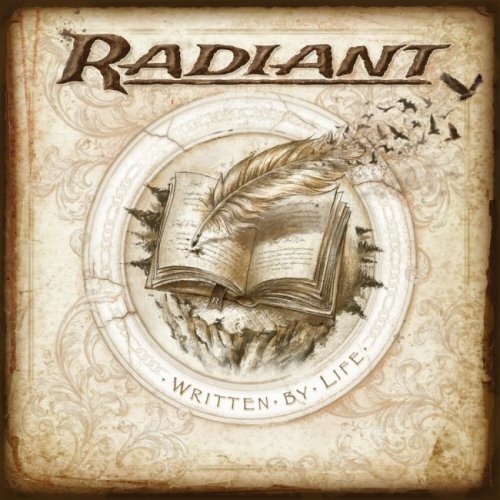The Creation: 2017 Creation Theory - 4CD + DVD Box Set Edsel Records
Lossless Galaxy Release The Creation: 2017 Creation Theory 4CD + DVD Box Set Edsel Records Performer: The Creation Box: 2017 Creation Theory (4CD + DVD Box Set Edsel Records) Info: Demon Music / Edsel Records Bam-Caruso Records / Cherry Red Records / Universal Music CD / DVD / Amazon Exclusive Limited Edition Numbered (limited to 500) № 127 Catalog Box / All Discs: CREATIONBOX01 Made in EU Dynamic Range: 8 / 8 / 9 / 10 Genre / Style: Rock / Mod Released Year: Apr 28, 2017 Format: CDs: FLAC /

The Creation: 2017 Creation Theory - 4CD + DVD Box Set Edsel Records
Lossless Galaxy Release The Creation: 2017 Creation Theory 4CD + DVD Box Set Edsel Records Performer: The Creation Box: 2017 Creation Theory (4CD + DVD Box Set Edsel Records) Info: Demon Music / Edsel Records Bam-Caruso Records / Cherry Red Records / Universal Music CD / DVD / Amazon Exclusive Limited Edition Numbered (limited to 500) № 127 Catalog Box / All Discs: CREATIONBOX01 Made in EU Dynamic Range: 8 / 8 / 9 / 10 Genre / Style: Rock / Mod Released Year: Apr 28, 2017 Format: CDs: FLAC /
13 10, 2025
Temple Of The Dog: 1991 Temple Of The Dog - 2CD + LP + DVD + Blu-ray Audio Super Deluxe Box Set A&M Records 2016
Lossless Galaxy Release Temple Of The Dog: 1991 Temple Of The Dog 2CD + LP + DVD + Blu-ray Super Deluxe Box Set A"> Performer: Temple Of The Dog Box / Album: 1991Temple Of The Dog (2CD + LP + DVD + Blu-ray Super Deluxe Box Set A"> Каждый альбом можно скачать отдельно Each album can be downloaded separately • • • • • • • • • • • • • • • • • • • • • • • • • • • • • • • • Upload: xFile.cloud (5% recovery)
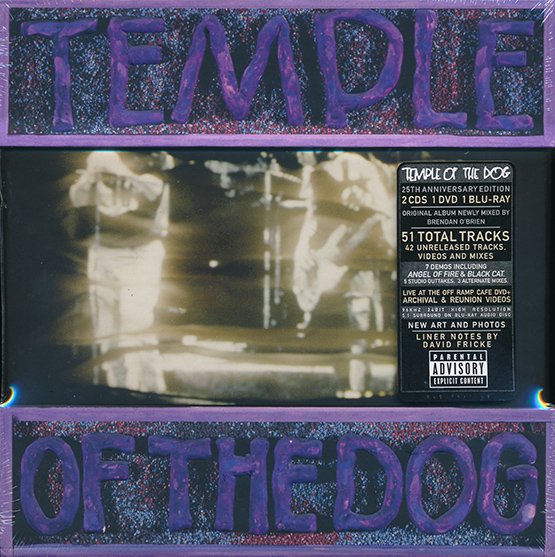
Temple Of The Dog: 1991 Temple Of The Dog - 2CD + LP + DVD + Blu-ray Audio Super Deluxe Box Set A&M Records 2016
Lossless Galaxy Release Temple Of The Dog: 1991 Temple Of The Dog 2CD + LP + DVD + Blu-ray Super Deluxe Box Set A"> Performer: Temple Of The Dog Box / Album: 1991Temple Of The Dog (2CD + LP + DVD + Blu-ray Super Deluxe Box Set A"> Каждый альбом можно скачать отдельно Each album can be downloaded separately • • • • • • • • • • • • • • • • • • • • • • • • • • • • • • • • Upload: xFile.cloud (5% recovery)
13 10, 2025
SUPREME JAZZ «Series- SACD Collection» (16 × SACD • Membran Music Ltd. • 2006)
Collection: "SUPREME JAZZ" Artist: SONNY ROLLINS, DUKE ELLINGTON, BARNEY KESSEL, GERRY MULLIGAN, LESTER YOUNG, STAN GETZ, DIZZY GILLESPIE, DAVE BRUBECK, CHARLES MINGUS, CLARK TERRY, CANNONBALL ADDERLEY, OSCAR PETERSON, JOHN COLTRANE, SONNY CLARK TRIO, GROVER WASHINGTON, Jr. Series: SACD-Mastering Hommage Multimedia GmbH— Label: (c)(p) 2006 Membran International GmbH / Audio Fidelity / Sony Music Source: Rip by PS³SACD ⇒ Conversion DSD64 by KoGGaN™ scans by inet… Official DR value:

SUPREME JAZZ «Series- SACD Collection» (16 × SACD • Membran Music Ltd. • 2006)
Collection: "SUPREME JAZZ" Artist: SONNY ROLLINS, DUKE ELLINGTON, BARNEY KESSEL, GERRY MULLIGAN, LESTER YOUNG, STAN GETZ, DIZZY GILLESPIE, DAVE BRUBECK, CHARLES MINGUS, CLARK TERRY, CANNONBALL ADDERLEY, OSCAR PETERSON, JOHN COLTRANE, SONNY CLARK TRIO, GROVER WASHINGTON, Jr. Series: SACD-Mastering Hommage Multimedia GmbH— Label: (c)(p) 2006 Membran International GmbH / Audio Fidelity / Sony Music Source: Rip by PS³SACD ⇒ Conversion DSD64 by KoGGaN™ scans by inet… Official DR value:
13 10, 2025
Жанры
Lossless Galaxy Release
Русская музыка
--Поп
--Рок
--Панк
--Альтернатива
--Металл
--Рэп, Хип-Хоп, R'n'B
--Джаз и Блюз
--Фолк
--Шансон, Авторская песня
--СССР
Зарубежная музыка
--Pop
--Rock
--Hard Rock
--Progressive & Art-Rock
--Pop-Rock & Soft Rock
--Instrumental Rock
--Heavy, Traditional, Industrial Metal
--Power, Gothic, Sympho Metal
--Thrash, Speed, Groove, Modern Metal
--Death, Melodic Death, Doom, Dark Metal
--Black, Pagan, Folk, Viking Metal
--Alternative
--Punk
--Disco, Eurodance
--Rap, Hip Hop, R'n'B
--Reggae, Ska, Dub
--Jazz, Blues, Soul
--Folk, Country, Ethnic
--Electronic, Ambient, New Wave
--House, Techno, Trance
Другие жанры
--New Age, Relax, Meditative & Flamenco
--Chillout, Lounge, Downtempo, Trip-Hop
--Drum & Bass, Jungle, Breakbeat, IDM
--Classical / Классическая музыка
--Soundtrack
--Музыкальные сказки
Vinyl Rip
HI-Res / DVD-Audio / DTS
--SACD
--DSD
--DVD-Audio
Сборники Lossless-Galaxy
Альбомы 2022
Альбомы 2023
Альбомы 2024
Теги
1st Press 2022 2023 2024 2025 70... AOR Black Metal Blues Blues Rock Bootleg Series Classic Rock Death Metal Discography Exclusive for Lossless-Galaxy Folk Rock Fusion Hard Rock Heavy Metal Hi-Res Japanese Edition Jazz Jazz Rock lossless Melodic Death Metal Melodic Rock Modern Electric Blues Pop Pop Rock Power Metal Prog Rock Progressive Metal Progressive Rock Psych Rock Psychedelic Rock Rock SACD Symphonic Metal Thrash Metal Дискографии от KoGGaN
Архивы
Опрос
В каком формате хотели бы видеть релизы на сайте ?
 Автор: petruha, 9 июня 2022, Комментариев: 0, Просмотров: 729
Автор: petruha, 9 июня 2022, Комментариев: 0, Просмотров: 729Amenra - De Doorn 2021
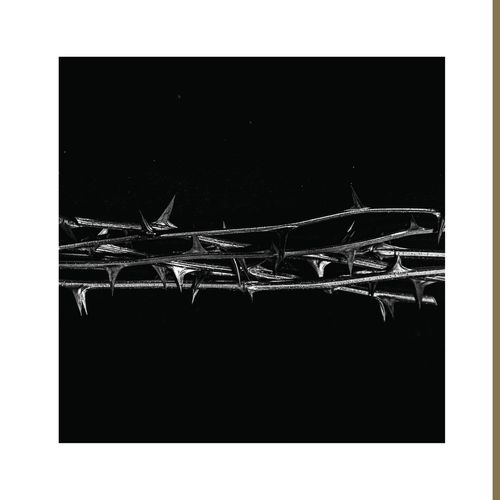
Исполнитель: Amenra
Альбом: De Doorn
Жанр: Doom, Sludge Metal
Год: 2021
Страна: Belgium
Формат: FLAC (tracks)
Битрейт аудио: lossless
Размер: 254 MB
Залито на: XFile (3% восстановление)
Альбом: De Doorn
Жанр: Doom, Sludge Metal
Год: 2021
Страна: Belgium
Формат: FLAC (tracks)
Битрейт аудио: lossless
Размер: 254 MB
Залито на: XFile (3% восстановление)
Изменил: petruha по причине: RE-UP
 Автор: petruha, 9 июня 2022, Комментариев: 0, Просмотров: 720
Автор: petruha, 9 июня 2022, Комментариев: 0, Просмотров: 720Darkthrone - Eternal Hails 2021
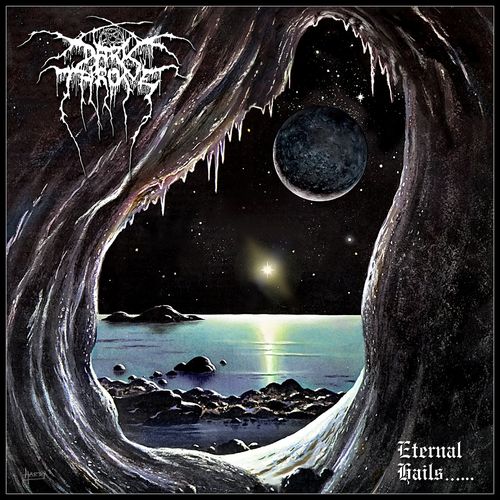
Исполнитель: Darkthrone
Альбом: Eternal Hails
Жанр: Black Metal, Death Metal
Год: 2021
Страна: Norway
Формат: FLAC (tracks)
Битрейт аудио: lossless
Размер: 251 MB
Залито на: XFile (3% восстановление)
Альбом: Eternal Hails
Жанр: Black Metal, Death Metal
Год: 2021
Страна: Norway
Формат: FLAC (tracks)
Битрейт аудио: lossless
Размер: 251 MB
Залито на: XFile (3% восстановление)
Изменил: petruha по причине: RE-UP
 Автор: petruha, 9 июня 2022, Комментариев: 0, Просмотров: 622
Автор: petruha, 9 июня 2022, Комментариев: 0, Просмотров: 622Year Of No Light - Consolamentum 2021

Исполнитель: Year Of No Light
Альбом: Consolamentum
Жанр: Sludge, Experimental, Post-Metal
Год: 2021
Страна: France
Формат: FLAC (tracks)
Битрейт аудио: lossless
Размер: 362 MB
Залито на: XFile (3% восстановление)
Альбом: Consolamentum
Жанр: Sludge, Experimental, Post-Metal
Год: 2021
Страна: France
Формат: FLAC (tracks)
Битрейт аудио: lossless
Размер: 362 MB
Залито на: XFile (3% восстановление)
Изменил: petruha по причине: RE-UP
 Автор: petruha, 9 июня 2022, Комментариев: 0, Просмотров: 446
Автор: petruha, 9 июня 2022, Комментариев: 0, Просмотров: 446Soul of Rain - Игра на выживание 2022

Исполнитель: Soul of Rain
Альбом: Игра на выживание
Жанр: Heavy Metal
Год: 2022
Страна: Ukraine (Kharkiv)
Лейбл: RubyRoad Records
Формат: FLAC (tracks)
Official DR value: DR5
Разрядность: 16bit / 44.1kHz Stereo
Размер: 232 MB
Источник: qobuz
Залито на: XFile (3% восстановление)
Альбом: Игра на выживание
Жанр: Heavy Metal
Год: 2022
Страна: Ukraine (Kharkiv)
Лейбл: RubyRoad Records
Формат: FLAC (tracks)
Official DR value: DR5
Разрядность: 16bit / 44.1kHz Stereo
Размер: 232 MB
Источник: qobuz
Залито на: XFile (3% восстановление)
«Exclusive for Lossless-Galaxy»
 Автор: petruha, 9 июня 2022, Комментариев: 0, Просмотров: 615
Автор: petruha, 9 июня 2022, Комментариев: 0, Просмотров: 615Dod (Död) - Arising From the Ashes 2022

Исполнитель: Dod (Död)
Альбом: Arising From the Ashes
Жанр: Heavy Metal
Год: 2022
Страна: Sweden (Gothenburg, Västra Götaland)
Лейбл: Holy Mooses
Формат: FLAC (tracks)
Official DR value: DR6
Разрядность: 16bit / 44.1kHz Stereo
Размер: 313 MB
Источник: qobuz
Залито на: XFile (3% восстановление)
Альбом: Arising From the Ashes
Жанр: Heavy Metal
Год: 2022
Страна: Sweden (Gothenburg, Västra Götaland)
Лейбл: Holy Mooses
Формат: FLAC (tracks)
Official DR value: DR6
Разрядность: 16bit / 44.1kHz Stereo
Размер: 313 MB
Источник: qobuz
Залито на: XFile (3% восстановление)
«Exclusive for Lossless-Galaxy»
 Автор: sevasval, 9 июня 2022, Комментариев: 0, Просмотров: 744
Автор: sevasval, 9 июня 2022, Комментариев: 0, Просмотров: 744Michael Des Barres - Somebody Up There Likes Me (1986) [Japan Press]
![Michael Des Barres - Somebody Up There Likes Me (1986) [Japan Press] Michael Des Barres - Somebody Up There Likes Me (1986) [Japan Press]](/uploads/posts/2018-09/1536561783_frobi.jpg)
Исполнитель: Michael Des Barres
Альбом: Somebody Up There Likes Me
Год выпуска: 1986
Жанр: Soft Rock, Melodic Rock
Формат: FLAC (image+.cue,log,scans)
Качество: Lossless
Размер: 296 Mb
ФО: xfile | turbobit | katfile
 Автор: mirage63, 9 июня 2022, Комментариев: 1, Просмотров: 881
Автор: mirage63, 9 июня 2022, Комментариев: 1, Просмотров: 881The Sensational Alex Harvey Band - Framed (1972)
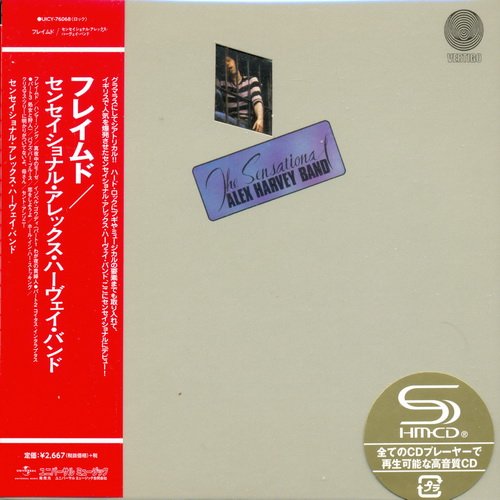
Artist : The Sensational Alex Harvey Band
Title Of Album: Framed
Year Of Release: 1972 (2013)
Label (Catalog#): Universal Music Japan (UICY-76068)
Country : UK
Genre: Glam Rock, Pop Rock
Quality : FLAC (*image + .cue,log,scans)
Bitrate: Lossless
Time: 44:22
Full Size: 443,0 MB
Title Of Album: Framed
Year Of Release: 1972 (2013)
Label (Catalog#): Universal Music Japan (UICY-76068)
Country : UK
Genre: Glam Rock, Pop Rock
Quality : FLAC (*image + .cue,log,scans)
Bitrate: Lossless
Time: 44:22
Full Size: 443,0 MB
Изменил: mirage63 по причине: Обновление ссылок
 Автор: swint68, 9 июня 2022, Комментариев: 0, Просмотров: 515
Автор: swint68, 9 июня 2022, Комментариев: 0, Просмотров: 515Radiant - Written By Life (2022)
Исполнитель: Radiant
Страна: Germany
Альбом: Written By Life
Жанр: Melodic Heavy Metal | Hard Rock
Издатель: Massacre Records; Fono Ltd. [FO1715CD]
Год: 2022
Формат: FLAC (*image + .cue,log, covers)
Размер: 466Mb
Залито: XFile | Turbobit | GigaPeta (3% на восстановление)
Страна: Germany
Альбом: Written By Life
Жанр: Melodic Heavy Metal | Hard Rock
Издатель: Massacre Records; Fono Ltd. [FO1715CD]
Год: 2022
Формат: FLAC (*image + .cue,log, covers)
Размер: 466Mb
Залито: XFile | Turbobit | GigaPeta (3% на восстановление)
 Автор: mirage63, 9 июня 2022, Комментариев: 0, Просмотров: 765
Автор: mirage63, 9 июня 2022, Комментариев: 0, Просмотров: 765The Sensational Alex Harvey Band - Next (1973)
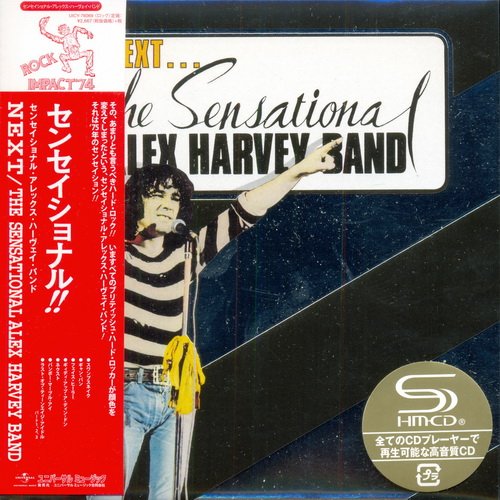
Artist : The Sensational Alex Harvey Band
Title Of Album: Next
Year Of Release: 1973 (2013)
Label (Catalog#): Universal Music Japan (UICY-76069)
Country : UK
Genre: Glam Rock, Pop Rock
Quality : FLAC (*image + .cue,log,scans)
Bitrate: Lossless
Time: 36:17
Full Size: 370,0 MB
Title Of Album: Next
Year Of Release: 1973 (2013)
Label (Catalog#): Universal Music Japan (UICY-76069)
Country : UK
Genre: Glam Rock, Pop Rock
Quality : FLAC (*image + .cue,log,scans)
Bitrate: Lossless
Time: 36:17
Full Size: 370,0 MB
Изменил: mirage63 по причине: Обновление ссылок
 Автор: mirage63, 9 июня 2022, Комментариев: 0, Просмотров: 744
Автор: mirage63, 9 июня 2022, Комментариев: 0, Просмотров: 744The Sensational Alex Harvey Band - The Impossible Dream (1974)
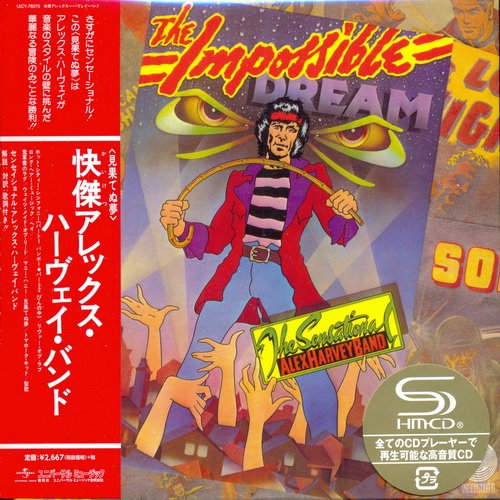
Artist : The Sensational Alex Harvey Band
Title Of Album: The Impossible Dream
Year Of Release: 1974 (2013)
Label (Catalog#): Universal Music Japan (UICY-76070)
Country : UK
Genre: Glam Rock, Pop Rock
Quality : FLAC (*image + .cue,log,scans)
Bitrate: Lossless
Time: 42:52
Full Size: 470,0 MB
Title Of Album: The Impossible Dream
Year Of Release: 1974 (2013)
Label (Catalog#): Universal Music Japan (UICY-76070)
Country : UK
Genre: Glam Rock, Pop Rock
Quality : FLAC (*image + .cue,log,scans)
Bitrate: Lossless
Time: 42:52
Full Size: 470,0 MB
Изменил: mirage63 по причине: Обновление ссылок
